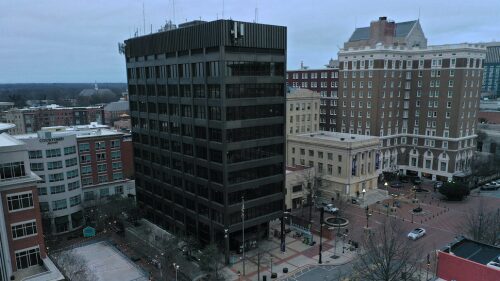Paris Mountain is now home to cool hiking trails and hot real estate but it also has quite a significant stake in South Carolina’s history.
1770: The most common story we’ve heard says the area’s namesake, Richard Pearis, was living with a Native American chief’s daughter on a plantation along the banks of the Reedy River (in what is now downtown Greenville). During the Revolutionary War, Pearis supported the Tories and their Cherokee allies – which led to some issues from a Patriot troop, who raided his plantation, burned his mill + home, and jailed him in Charleston. Upon his release, he fled to the Bahamas.
Native Americans – specifically, members of the Cherokee tribe – called Paris Mountain (yes, spelled without the ‘e’) home until the land was forfeited to South Carolina in 1777 following the end of the Revolutionary War.
1889 - 1898: The Altamont Hotel was constructed on Paris Mountain’s summit as a summer retreat for Charleston residents who preferred mountain air and less mosquitoes to humid air + sandy beaches. The journey from downtown Greenville to the hotel took 2 hours due to terrain. It also lacked running water and eventually went out of business in 1898 and burned down in 1920.
1889 - 1918: The Paris Mountain Water Company created lakes and dams on the mountain, which provided Greenville with its first water system. Under Franklin D. Roosevelt’s New Deal, Camp Buckhorn was added to Paris Mountain and it was established as a national park.
Summer of 1917: A 1,900-acre training camp, Camp Sevier, was built near the base of Paris Mountain for the newly-created 30th Infantry Division during World War I. This is about the same time that Eugenia Duke (who created Duke’s Mayonnaise Co.) started handing out sandwiches to soldiers at the camp.











